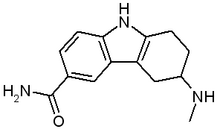Menstrually associated migraines tend to be more severe than attacks that occur at other times of the month, an observational study has shown.
In addition, the intensity and duration of menstrual migraines can be mitigated in some women through prophylactic treatment with frovatriptan (Frova), according to the results of a second study.
Menstrual migraine is defined as migraine headache that occurs regularly between 2 days before and the first 3 days of menstrual bleeding, said Dr. Anne MacGregor of St. Bartholomew's Hospital in London and lead author of one of the studies (Neurology 63[2]:351-53, 2004).
Dr. MacGregor and her colleagues analyzed the migraine patterns of 155 women seeking treatment at the City of London Migraine Clinic. All of the women in the study tracked at least two menstrual cycles, and nearly half of the women tracked four or more menstrual cycles. The investigators used the information on each woman's self-report card to ascertain whether the patient had experienced a headache or a migraine.
Only those women who were not using hormonal contraception were considered in the analysis.
The likelihood of experiencing a migraine attack was 25% higher in the 5 days preceding menstruation and 71% higher in the 2 days preceding menstruation than at other times of the month. In addition, severe attacks were more likely to occur during the 5 days prior to and the 5 days following menstruation, compared with all other times of a woman's cycle, and women were almost five times more likely to have a migraine associated with vomiting on or during days 1-3 of menstruation.
In a multicenter, placebo-controlled, randomized trial, Dr. Stephen D. Silberstein of Thomas Jefferson University in Philadelphia and his associates found that frovatriptan may be a promising remedy for preventing or modifying expected menstrual migraine attacks. The investigators compared the effect of prophylactic treatment with the new selective 5HT receptor agonist in a three-way crossover investigation involving 443 patients from 36 medical centers in the United States (Neurology 63[2]:261-69, 2004).
Patients in the study were randomly assigned to treat each of three perimenstrual periods with placebo, 2.5 mg frovatriptan once daily, and 2.5 mg frovatriptan twice daily. Treatment began 2 days before the anticipated start of menstrual migraine and lasted for 6 days per cycle.
Both frovatriptan regimens reduced the occurrence of migraine. The incidence of migraine with twice-daily and once-daily frovatriptan was 41% and 52%, respectively, compared with 67% for placebo.
Both frovatriptan regimens also significantly reduced migraine severity, duration, functional impairment, and the use of rescue medication.
Despite the observed treatment effects, "other issues remain to be settled before the routine use of triptan prophylaxis for menstrual migraines can be advocated," Dr. Elizabeth Loder of Harvard Medical School, Boston, said in an accompanying editorial.
For example, the most effective dosing regimen in the current study required monthly use of 14 triptan tablets, an amount not likely to be reimbursed by most third-party payers, "effectively placing treatment out of reach for many women," she said.
In addition, the observed treatment effects were modest and comparative trials are needed to determine the appropriate role for this therapy within the context of other available therapies, Dr. Loder said.
The frovatriptan study received support from Vernalis Ltd., which produces frovatriptan.
BY DIANA MAHONEY
New England Bureau
COPYRIGHT 2004 International Medical News Group
COPYRIGHT 2004 Gale Group



